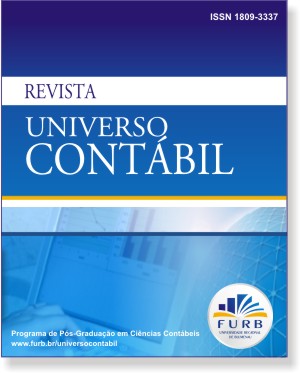STRUCTURE OF THE ACCOUNTANCY CURRICULUM IN BRAZIL VERSUS CURRICULAR STRUCTURES PROPOSED BY INTERNATIONAL AGENCIES: A COMPARATIVE ANALYSIS
DOI:
https://doi.org/10.4270/ruc.20106Keywords:
Accountancy, Accounting education, Curricular structures.Abstract
The changes that occurred in the business environment during the last few decades have affected the work of businesses and, consequently, the professional practice of accountancy. International organizations such as IFAC, ISAR/UNCTAD, AICPA and AECC, concerned about the capacity of IHE to train accountants who can respond to the new demands of employers, have issued reports that reveal the competencies required from graduates of accountancy courses, when they enter the job market, aiming, thus, to align the structure of the curriculum with the market demands. In this context, the present article aims to present a comparative study of the curricular structures proposed by IFAC, ISAR/UNCTAD, AICPA and AECC and by Resolution CNE/CES nr. 10/2004, especially regarding the competences, skills and attitudes that need to be developed. The results indicate that the curricular guidelines that guide the design of accountancy course curricula in Brazil acknowledge the need to develop competences related to professional training, complemented by knowledge of organization, administration and IT, besides the development of skills such as: communication, leadership and interpersonal relations, thus becoming aligned with the proposals made by organizations such as IFAC, ISAR/UNCTAD, AICPA and AECC.Downloads
Downloads
Published
2010-02-03
How to Cite
Ott, E., & Pires, C. B. (2010). STRUCTURE OF THE ACCOUNTANCY CURRICULUM IN BRAZIL VERSUS CURRICULAR STRUCTURES PROPOSED BY INTERNATIONAL AGENCIES: A COMPARATIVE ANALYSIS. Revista Universo Contábil, 6(1), 28–45. https://doi.org/10.4270/ruc.20106
Issue
Section
National Section
License
The copyright for papers published in this journal belong to the author, with rights of first publication for the journal. As the papers appears in this publicly accessed journal, the papers are for free use, receiving their credit, in educational and non-commercial uses. The journal will allow the use of the papers published for non-commercial purposes, including the right to send the paper to publicly accessed databases.


